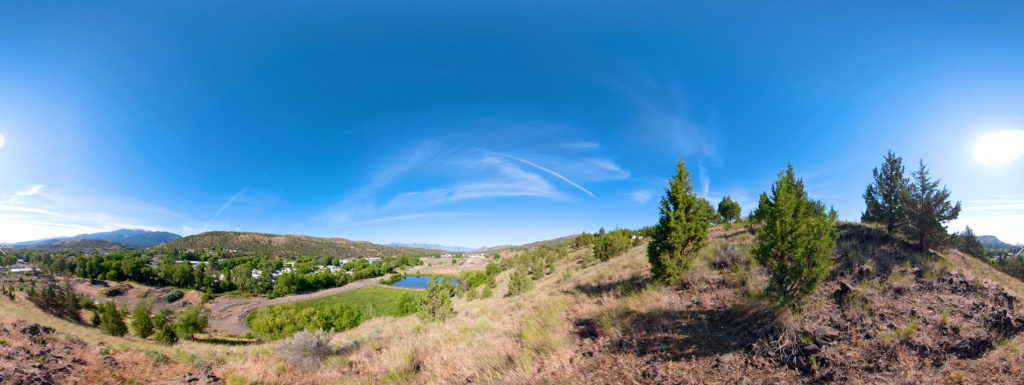
An electric cooperative in northeastern Oregon is helping transform a lumber town into a thriving rural community that attracts entrepreneurs, artists, young families, retirees and tourists.
For years, Oregon Trail Electric Cooperative has been a key contributor to the Oregon Pine/Innovation Gateway Plan, a wide-ranging blueprint that’s made some inroads in tackling the area’s affordable housing crunch. Over the past three years, 14 new homes have gone up in the frontier town located about four hours from Portland. In the prior decade, only three new homes were built.
“You can’t grow or sustain your population if you’re only building three houses a decade,” said Nick Green, the city manager and the plan’s author. “We went from five operational mills down to one, and we were seeing flat or declining municipal revenues based on the loss of customers.”
The need for more housing is especially urgent these days, said Green, as John Day is experiencing its first growth spurt in a generation. Attracted by housing incentives and a pandemic-fueled desire to move to less urbanized areas, 15 people, most of them active retirees, moved to John Day last year. That increased the population to 1,750.
But that mini-population bump likely won’t be the last—city officials are forecasting continued growth—and it’s coinciding with another pandemic phenomenon: a nationwide shortage in supplies rendered by the public health crisis and a series of natural disasters.
In addition to the supply crunch, “there’s a huge shortage of skilled labor to build housing, which we’ve been trying to solve for a while,” said Lea Hoover, director of administration and strategic services at OTEC, based in Baker City.
The co-op has been a gateway to cutting-edge solutions, such as giving John Day a starring role in a virtual reality tour for tourism and workforce attraction and, in addressing the area’s housing crunch, 3D-printed houses. The technology entails a giant 3D printer that spits out die-cuts of concrete, plastic or other building materials on site.
“3D printing cuts a significant amount of time off what a traditional contractor would bring to the table,” said Hoover. “All of a sudden, we’re able to stand up a home in a six- to eight-week period versus six to eight months.”
Green became aware of 3D printing when OTEC, one of three winners of Touchstone Energy ® Cooperative’s Co-op Community Contest, connected him to small-town placemaking expert Zachary Mannheimer, CEO of Atlas Community Studios, based in Des Moines, Iowa. His other firm, Alquist 3D, partners with COBOD, a Danish manufacturer of 3D printers.
The technology will be a welcome addition to the city’s cash-back incentives for new homeowners, said Green.
“I was sharing with Zack that we now have permitted up to 115 homes in two new master planned developments, but we don’t have laborers to build 115 homes or anywhere near that,” he said. “And he told me how his company is looking at 3D home printing and was doing the first one in Richmond, Virginia, as we speak.”
John Day’s 3D houses are targeted for veterans, and a first “pour” is scheduled for April 2022, said Green. Measuring about 1,000 square feet, each one-story home will contain smart technology and other energy-efficient features and will be available to rent for about $700 a month.
And if the printer can crank out multiple homes, Green said he would loan out the giant COBOD printer to neighboring towns also served by OTEC.
“There’s a lot we don’t know about economies of scale with 3D printing. So far, they’ve only been done one at a time,” said Green, adding that he’s teaming with another consultant, ECONorthwest, to help other communities learn from the project.
Access to high-tech solutions allows small cities like John Day to “punch above their weight” in improving their communities, said Green.
“OTEC has been great and very supportive,” he said. “We’re all in this together, trying to turn the tide of decline and get back into a stable, sustainable growth rate.”
Victoria A. Rocha is a staff writer for NRECA.